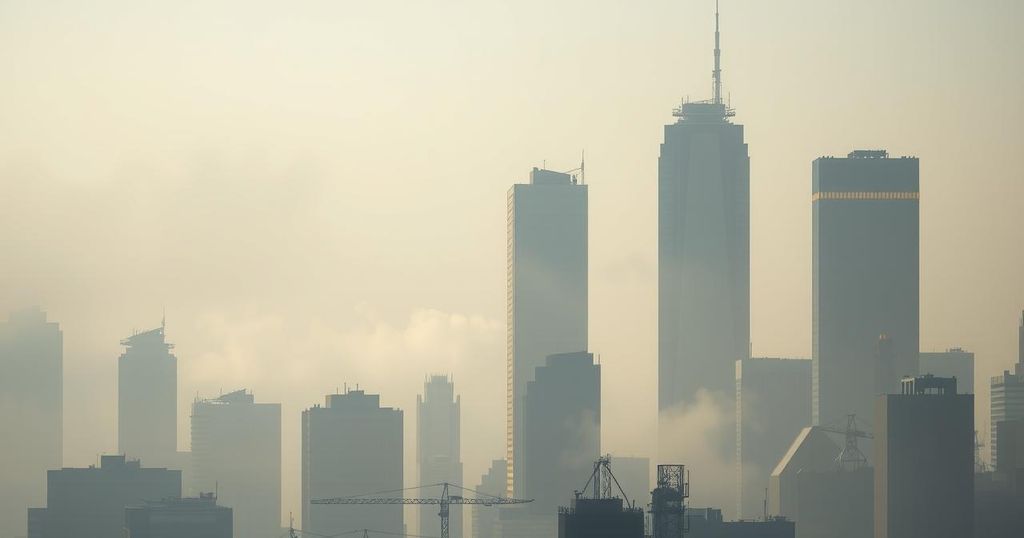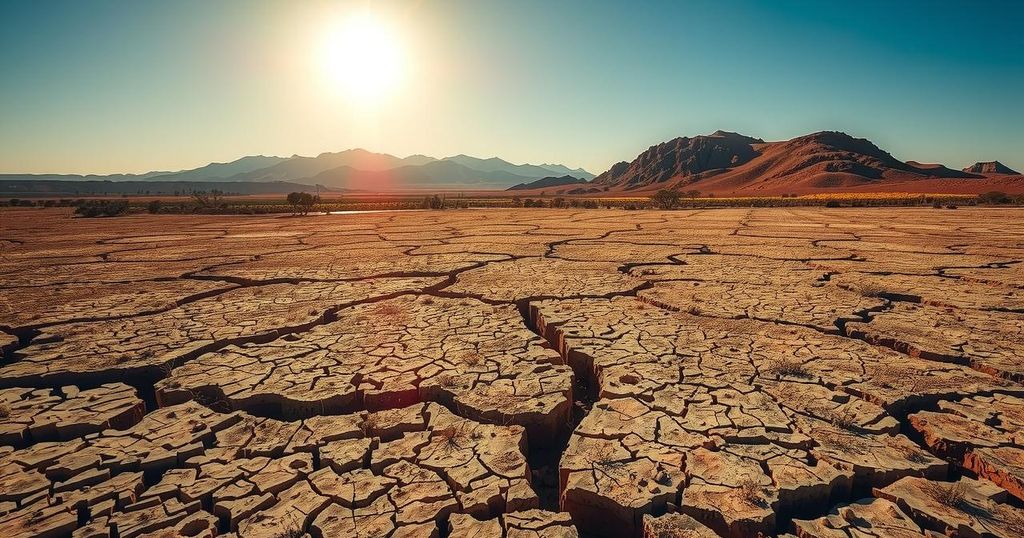Majority of Global Population Exposed to Poor Air Quality, Report Reveals
A report indicates that 83% of cities globally fail to meet air pollution standards, exposing the majority of the world’s population to polluted air. Chad, Congo, Bangladesh, Pakistan, and India were noted as having the dirtiest air. Experts express concern about unmonitored regions while recognizing improvements in various cities. Urgent actions are required to address the health impacts of poor air quality.
A recent report reveals that the majority of the global population is exposed to poor air quality, with only 17% of cities adhering to established air pollution guidelines. This analysis, conducted by the Switzerland-based air quality monitoring database IQAir, utilized data from 40,000 air quality stations across 138 countries. The report highlights Chad, Congo, Bangladesh, Pakistan, and India as having the most polluted air, with India containing six of the nine most contaminated cities, notably Byrnihat.
Experts caution that actual pollution levels may be even higher due to insufficient monitoring in many regions, especially in Africa. Currently, there is only one air quality monitoring station for every 3.7 million individuals in that region. However, there is progress, as 8,954 new locations have recently been incorporated into the data, alongside approximately one thousand new air quality monitors.
In a critical setback for air quality monitoring, the U.S. State Department has announced it will cease public dissemination of environmental data from its global embassies and consulates. Long-term exposure to polluted air presents severe health risks, including respiratory illness, Alzheimer’s disease, and cancer. According to the World Health Organization, approximately 7 million annual deaths can be attributed to air pollution.
Fatimah Ahamad, a leading air pollution expert, asserts that significant efforts are needed to reduce air pollution. She cites that an alarming 99% of the world’s population resides in areas that do not meet air quality standards. “If you have bad air, you cannot tell people to pause breathing,” she emphasizes, underscoring the necessity for action.
Positive advancements have been made in cities like Beijing, Seoul, and Rybnik, which have enacted stricter pollution regulations and promoted cleaner energy sources to enhance air quality. Furthermore, the Association of Southeast Asian Nations has created an agreement to address transboundary haze pollution, aiming for regional cooperation to manage pollution from forest fires during dry seasons.
Shweta Narayan from the Global Climate and Health Alliance elucidates the connection between air pollution and climate change, stating that regions suffering from severe air quality issues frequently produce high levels of greenhouse gases. She stresses that reducing emissions will not only mitigate climate crises but will also enhance air quality.
In conclusion, the alarming statistics regarding air pollution highlight a critical global health crisis, with the majority of the world’s population living in areas with unsafe air quality. Despite progress in monitoring and regulation, significant challenges remain. Collaborative efforts, both at local and international levels, are paramount to mitigate this environmental threat and enhance public health. Immediate action is crucial to reduce pollution levels and safeguard the well-being of future generations.
Original Source: apnews.com




Post Comment